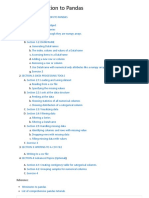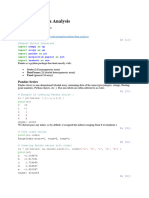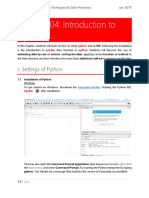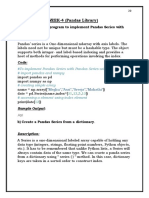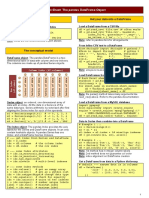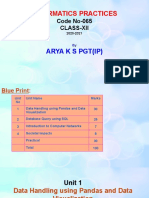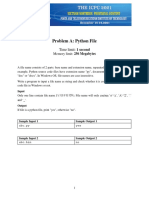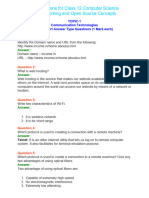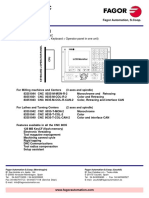0% found this document useful (0 votes)
31 views14 pagesData Analysis - 5th Unit
The document provides an overview of data analysis using Pandas, focusing on Pandas Series and DataFrames. It covers creating Series and DataFrames, performing operations like arithmetic calculations, boolean indexing, and handling missing values, as well as basic DataFrame manipulations such as adding and dropping columns. Additionally, it introduces data visualization techniques using Matplotlib, including line plots, bar graphs, histograms, and pie charts.
Uploaded by
niharikap229Copyright
© © All Rights Reserved
We take content rights seriously. If you suspect this is your content, claim it here.
Available Formats
Download as PDF, TXT or read online on Scribd
0% found this document useful (0 votes)
31 views14 pagesData Analysis - 5th Unit
The document provides an overview of data analysis using Pandas, focusing on Pandas Series and DataFrames. It covers creating Series and DataFrames, performing operations like arithmetic calculations, boolean indexing, and handling missing values, as well as basic DataFrame manipulations such as adding and dropping columns. Additionally, it introduces data visualization techniques using Matplotlib, including line plots, bar graphs, histograms, and pie charts.
Uploaded by
niharikap229Copyright
© © All Rights Reserved
We take content rights seriously. If you suspect this is your content, claim it here.
Available Formats
Download as PDF, TXT or read online on Scribd
/ 14



















